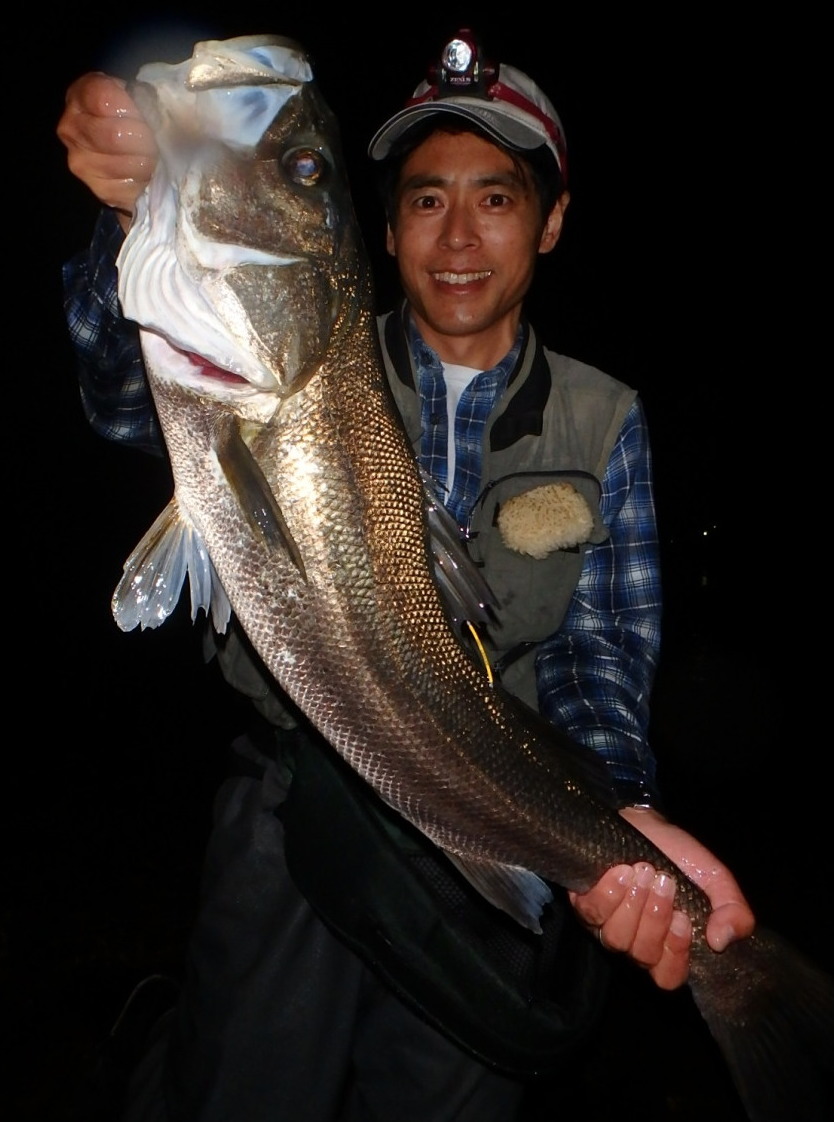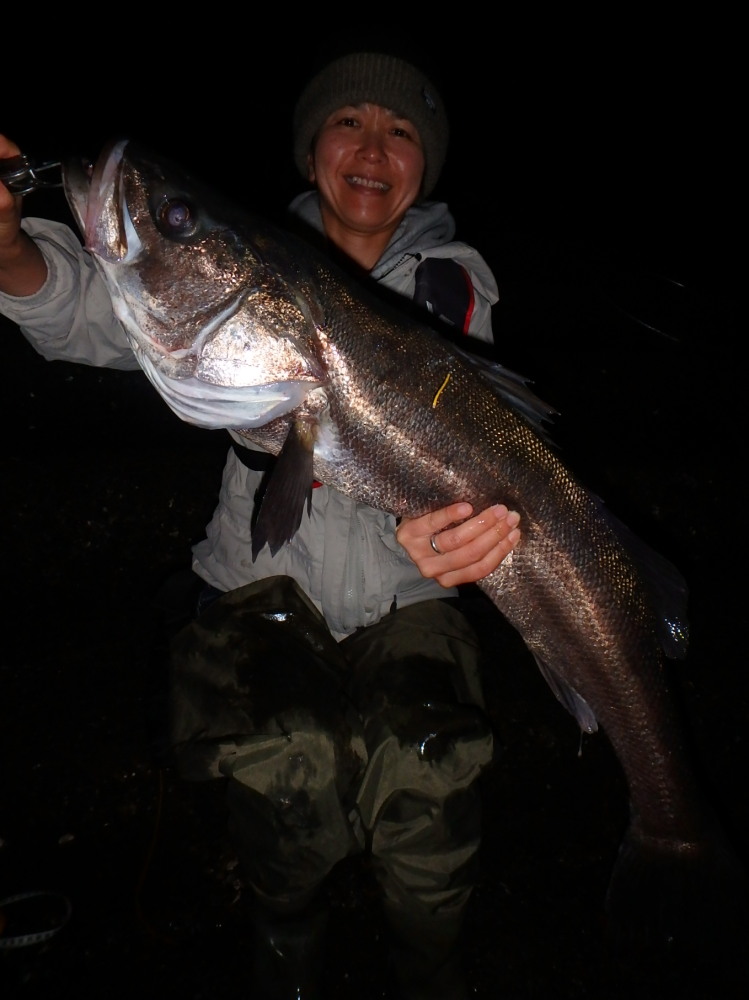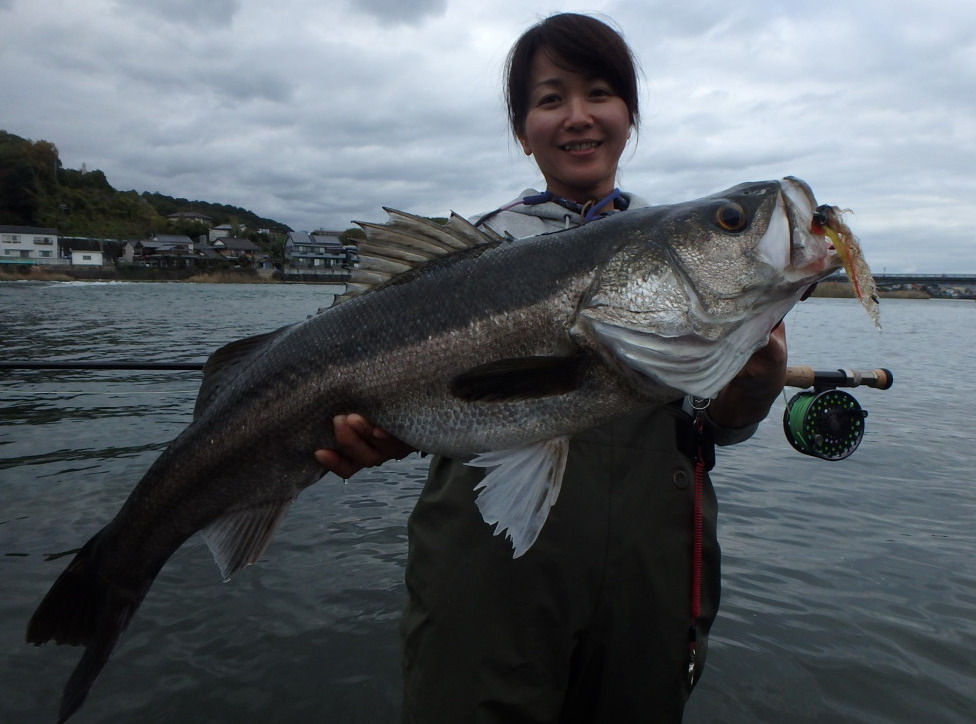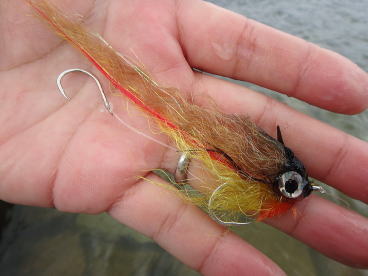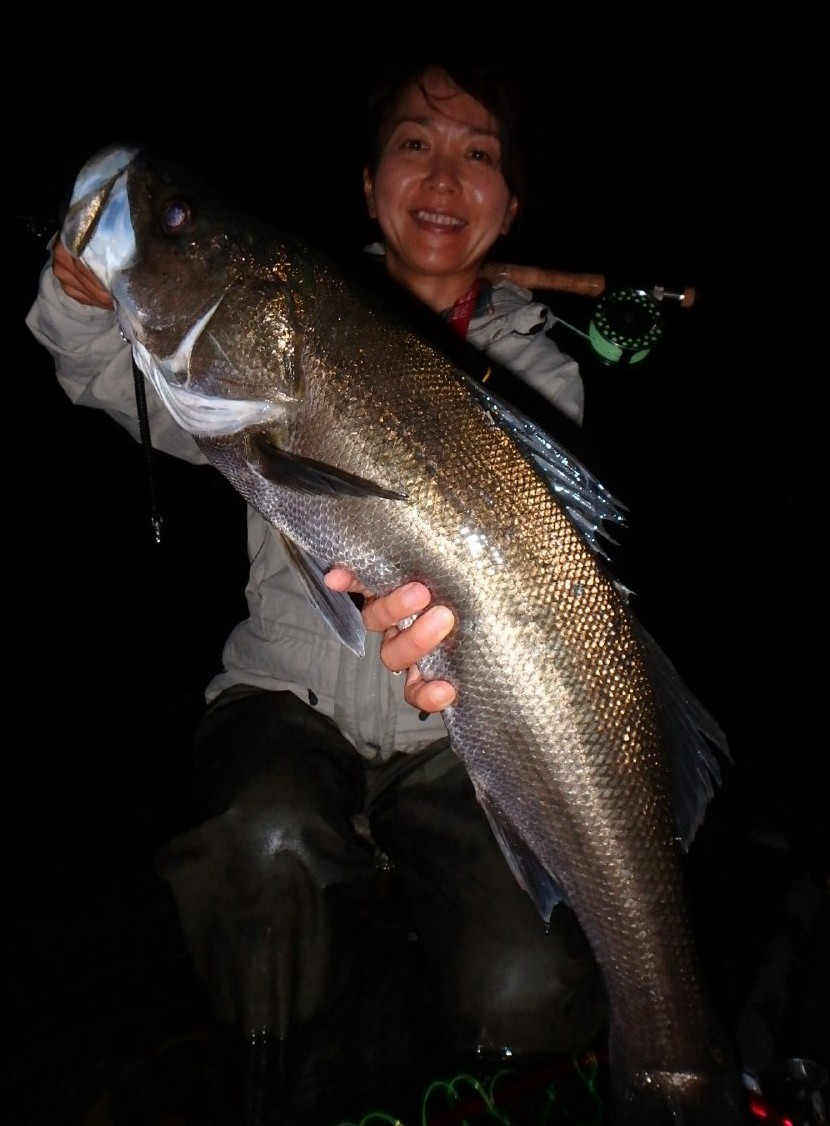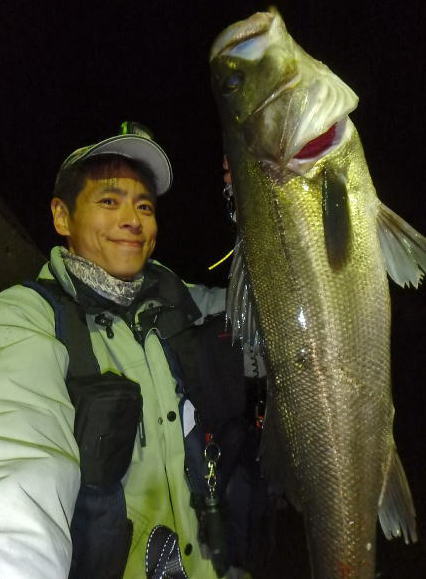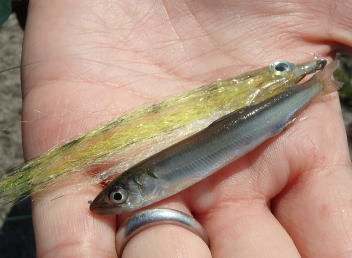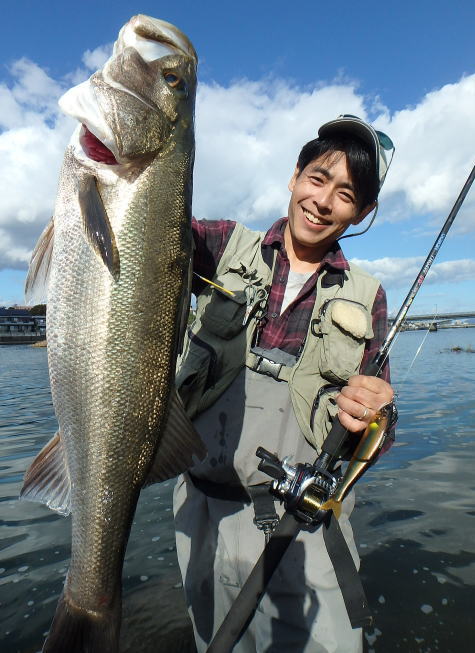Seabass game in 2016 went well, with considerably improved efficiency.
I am leaving Japan for several year's work abroad but, when I come back,
would love to work on this project for an ultimate answer - should there
be such!
- Bream Games
'Conoshiro pattern', shad like fish on their spawning migration, started
rather early this year. Or perhaps we just hadn't noticed it in the previous
seasons.
We started catching big fat giants from early October already, making our
nightly errand almost mandatory.
Our catch was topped by 90cm trophy, followed up by several nearly as big.
When big seabass start chasing big meals (20-30cm) it becomes really hard
to entice them with a humble fly.
That nevertheless is a subject worth further researches and I will keep
you posted.
Just when we thought that could be end of it, a true big fortune rolled
in - a solid rain that continued for 2 full days. The river went up raging
high and then started to come down. I had to take a day off and rush to
the crime scene. My emergency expedition (at the cost of business meetings)
was duly rewarded!
You must prepare multiple options, so you can hop onto the next best alternative
if you find someone fishing already.
Now if you luckily secure the intended spot, spend a good few minutes running
simulation. Fish in such places are highly educated and the first cast
is all that counts. Carefully select the spot to cast to, and ensure the
lure travels on the premeditated path. The moment a shadow of seabass looms
out of the shade to inspect the lure your heart will race!
Generally lure outfishes fly by a big margin - especially in a big water
where distance is one of the key. But in smaller water, where you know
seabass is holding, flyfishing could produce as much result. And once you
hook up the fish, flies have a big advantage of weighing by far less -
therefore hang on better than lures during those explosive head shakes.
Advent of monsoon in early June signals the start of yet another game.
The flood water cools down the river pushing down the hapless baitfish
along the way. Again, there come up Seabass to take advantage of the easy
meals.
Because bait fish are now larger, I size up my fly to some 4inches in length,
and give a bit faster, erratic retrieve in the pocket water amid fast currents.
I caught many fine seabass in this pattern, up to 71cm on fly and 86cm
on a lure. Because the bait is bigger, spinning outfit also with its ability
to cover wider area, tend to play better in this game.
Ochi Ayu game is really special in that seabass becomes so fixated to this
tasty, chunky prey (now 15-20cm). Unlike summer flood pattern, dying Ayu
tend to float right on the surface, pulsating but not swimming. And when
the condition is right, there are more seabass in the path of the drift
than the floating meals, so Seabass tend to grab at it competing against
each other. And I'm talking about these adult, big seabasses 70cm+. Catching
them on fly, crashing the surface in broad daylight is one of the finest
flyfishing we know of.
Baby Ayu pattern worked from late April thru to end May. There wasn't an
obvious correlation with the moon phase but, as is the case with Salmon,
Ayu too swim up the current during high water more actively. Warm rain
and slight increase of river level almost guaranteed an exciting night
out.
Catching a fine trophy of 80cm, I avenged myself on my defeat a year ago.
To enjoy a good Ochi Ayu pattern (spawned out Ayu) you need 3 things -
drop of temperature, shorter daylight and flood. Thanks to the typhoons
we continued to receive good rainfall from August to September but that
was a tad too early for Ayu to spawn and perish. Then came October when
Ochi Ayu could start any minute, but no rain. We suffered from 3 weeks
of continuous bright blue sky.
When we finally received a somewhat half hearted rain, we had to give it
a go anyhow. While the action was not that hot, Sayuri managed to nail
down this respectable fish to our great delight.
As we see off the cherry blossoms, baby Ayu start their migration from
the sea to the river. Chasing these vulnerable prey, come Seabass the predator
not far behind.
My new fly pattern and reduced speed of retrieve was received well by the
predators, and interestingly, I noticed fly could easily outfish lure in
this particular game.
On Seabass Games
Baby squid pattern of chilly winter nights was a subject I worked out with
a reasonable success. I made an extensive field research around Kurahashi
islands to the east of Hiroshima, catching several good fish up to 75cm.
This fishing is dependent on jetty lights. Baby squids are attracted to
the lights, and in turn, inviting their nemesis. The good location therefore
is all too obvious and are under nightly fishing pressure.
Seabass accounted for the biggest chunk this year again but the frequency
in less productive months dropped a lot. Meanwhile outing for breams increased
yet the total catch declined - due to a reason I touch on later. Only several
days were spent on the freshwater, though they too produced good fun in
their own rights. Let me dwell on each theme.
2015 was a year of harvest - from the researches of my past 2 seasons.
In '13 I spent 158 days out as I restarted SW fishing. In 2013 166 days
even. That was time spent to gather observations to weave my strategies.
Now 2015 was a year to test them. And sure enough, despite the reduced
frequency by a third (106 days), the total catch remained the same.
Take seabass fishing for instance, which arguably is the most data oriented
game of them all, the catch rate per outing kept rising, to more than double
of '13's. The sense of progress is not just rewarding but what lifts up
fishing to the height of science.
 '15 Journal
'15 Journal
